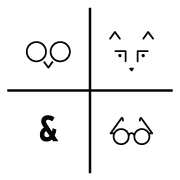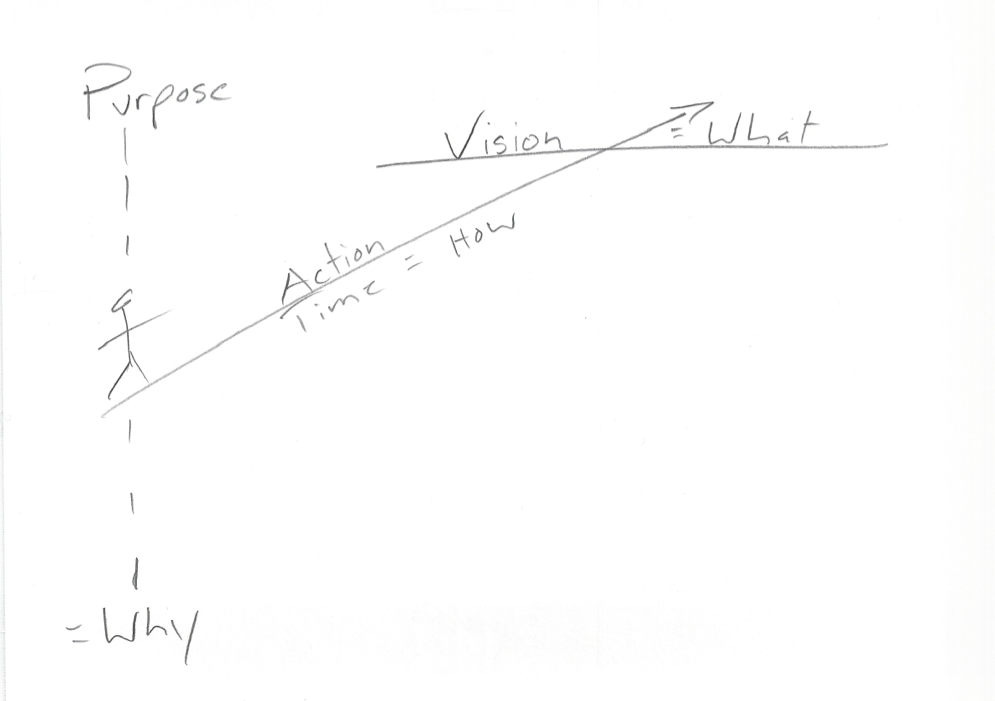What we can learn about leadership & business from a 20th century architect and a 21st century financial collapse.
On September 1, 2008, fourteen days before the financial collapse, I stood on the 3rd story roof of the business I had just launched and looked out at the horizon with a deep understanding of why I was going into "business."
I quote the word business because being "in business" was not my intent. In other words, I did not start a business solely to be in business, but rather to help build a better community. I knew that myself and my team were the right people to do it. We had a vision and the resolve to reach for it.
I believe that every business, every venture, starts out this way and although some lose sight of this over time, all (successful) businesses are founded with vision and purpose beyond simply exchanging money for some service or good.
To understand what it looks like to lose sight of this, we need only fast forward two weeks from then to the day the big banks fell and look at the current state of the financial industry five years later. To gain insight into why vision and purpose are so critical to our ventures, let’s rewind to the early 20th century and look at the architecture and philosophy of Richard Neutra.
One night last week, when I couldn’t sleep, sometime around 3:00am, I turned on a documentary called Coast Modern. This short film was about the Modern architectural movement on the west coast of North America, from LA to Vancouver, BC.
While I was dozing off, my mind awoke with inspiration to the words of the writer, Barbara Lamprecht as she explained the work of Richard Neutra and his design philosophy rooted in evolutionary biology.
Neutra defined his approach to design as "biorealism." Core to this philosophy was the belief (inspired by the work of one of the founding figures of modern psychology, Wilhelm Wundt) that human genetic code evolved on the savannas of east Africa and that our cognitive, physical, spiritual, and emotional development as a species is rooted in the unique attributes of this landscape. Our early ancestors developed their sense of spatial awareness and orientation walking upright across open plains marked by the occasional groups of trees, with a clear view of the horizon.
This image was authored by Christopher T Cooper (CT Cooper).
Neutra believed that our relation to the horizon is innate and incorporated it into his designs. He was “unforgiving” with his use of horizontal lines because of this. He also ensured that his homes, when possible, had clear views of the horizon on the surrounding landscape in order to satisfy our innate evolutionary need to orient ourselves, to feel secure and calm, to have perspective.
Richard Neutra at VDL House, 1966 by Julius Shulman, courtesy Raymond Neutra
In architecture and construction, the horizontal perspective is represented by the notion of “level" and the vertical, that of "plumb." Neutra believed that humans have an innate understanding of both level and plumb, horizontal and vertical.
What implications does this have on other forms of design? On our own leadership and personal development? On our ventures and our businesses?
I believe that the concepts of level and plumb, horizontal and vertical, are absolutely crucial to our ability to design anything as humans.
Our evolutionary relationship with the horizontal helps us understand our sense of place, and the vertical, which we first experienced through the growth of trees and plants and our own ability to stand upright (perhaps even our earliest notions of gravity) helped us understand our sense of self.
I believe that the horizontal (the literal horizon) not only gives us our bearing and sense of place that allows us to feel calm and comfortable, it represents a sense of continuous curiosity and wonder. It gives us the opportunity to imagine what's beyond what we can see in the present so we can strive for new experiences. This curiosity and imagination is what drives our development, our evolution. It's what allows us to innovate and grow individually as leaders and collectively as a culture. It helps us understand what is, and what can be.
Keeping our eyes and imaginations on the horizon is ingrained in our individual psychology and our collective behavior. For us to truly innovate, we must envision something beyond what we currently know and what we are immediately experiencing.
The vertical is what gives us our sense of self in relation to the world around us. It grounds us and allows us to develop and grow. It gives us a sense of purpose in the world. It gives us the resolve to seek out what we've imagined, to create what will be.
At first this may have been as simple as our ancestors’ curiosity of what was beyond a distant grove of trees on the horizon with the hope that there was food and shelter that allowed us to achieve our core purpose, survival. This deep sense of purpose, gave us the resolve, the will, to explore and move toward each new horizon.
The horizontal allows us to orient ourselves with what is and imagine what can be, while the vertical gives us a sense of purpose and the will to create it.
As we've evolved individually and culturally, as our society and our interactions have grown more complex, the horizontal (our vision) and the vertical (our purpose) manifest in different ways.
These concepts are absolutely critical for success as a leader and as a business. We must have vision in order to create something new, to innovate, to build a livelihood, and we must have a deep sense of purpose and the resolve in order to create and act in the ways necessary to reach that vision.
The mathematical relationship between the horizontal and vertical axis revolutionized art. The vanishing point became the basis for perspective drawing and allowed for a great leap in design. This understanding of the relationship between the horizontal and the vertical fueled the Renaissance which led to incredible innovation and a deeper understanding of human potential.
What if entrepreneurs and business owners designed their businesses, in addition to their products, with the same clarity of vision and deep purpose that Neutra had in his structures? What happened to the financial industry that led them to lose sight of their vision and lose their sense of purpose?
My team and I who launched the business in 2008 eventually moved on and because of our deep sense of purpose and our ability to share our vision with others, the business we created is now in new hands and is stronger than ever.
My vision for my own life shifted and I sought new horizons and through it all, gained a deeper sense of purpose. It’s what drove me to start this business and why I love what I do.
I believe that an intentional and deeper understanding of vision and purpose will lead to great achievements in business and in leadership.
That’s my vision and my purpose.



